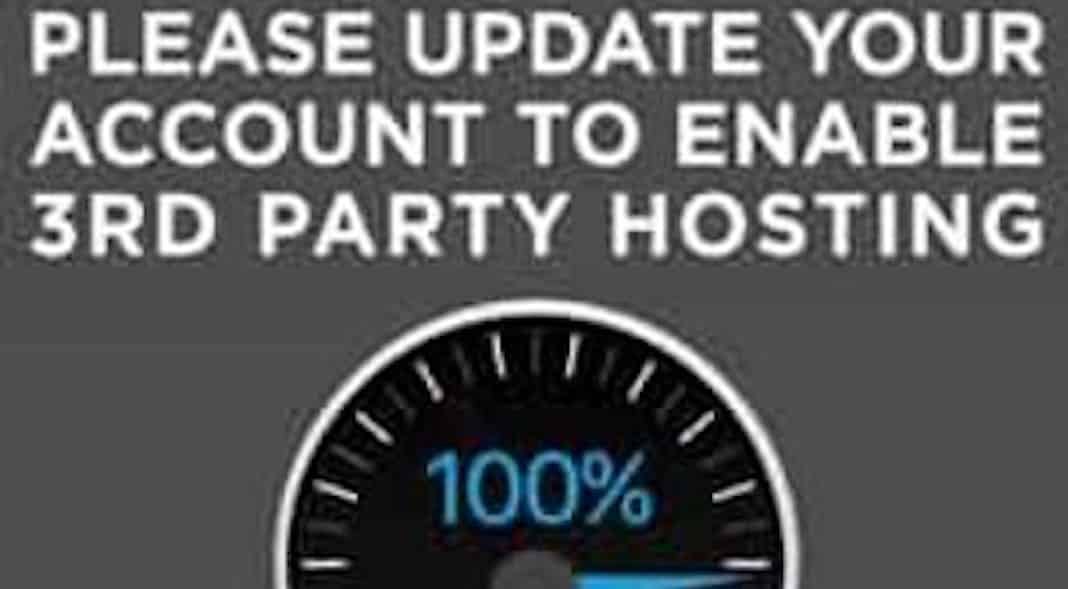Photobucket and a Different Kind of Content Theft
 Back in 2007, I wrote an article entitle “Why I Embed My Images“. The premise was that, for most blogs, images made up the bulk of 3rd-party content. That makes image hotlinking a way to protect yourself against questionable copyright notices.
Back in 2007, I wrote an article entitle “Why I Embed My Images“. The premise was that, for most blogs, images made up the bulk of 3rd-party content. That makes image hotlinking a way to protect yourself against questionable copyright notices.
It was a stupid, no-good, dumb idea.
I’d already backed away from it by 2009, when I moved my images to an Amazon account I controlled. Since then, I’ve even stopped doing that. Now, all images are hosted on the same server the site is.
The reasons for the move were many, including simplicity and speed, but the biggest was the hazard of creating additional failure points in my site. After all, if Amazon S3 went down, as it did earlier this year, it could cripple my site, even if my server was ok.
But there was another issue. As Plagiarism Today got bigger and more successful (and became a crucial part of my livelihood), I became worried about building a business on free image hosts. I worried about sites closing, technical limitations and other issues.
However, I never imagined anything on the scale of what Photobucket is doing to its users.
If I had continued using Photobucket, I could be faced with the prospect of either paying $399 to keep my site active or going through the process of replacing eight years of images.
Photobucket’s move not only broke millions of sites, but also broke the trust that they had built in their company name and, through proxy, trust in similar services. It’s a trust that will likely never be regained.
Photobucket’s Hotlinking Catastrophe
P hotobucket is an image hosting and sharing site that’s been around since 2003. According to their site, they have over 100 million users and host over 10 billion images.
hotobucket is an image hosting and sharing site that’s been around since 2003. According to their site, they have over 100 million users and host over 10 billion images.
For most of the site’s history, one of the great appeals is that all users, including those with free accounts, could hotlink images onto other sites. Image hotlinking, sometimes called inline linking, is where a user includes the image directly on another webpage, similar to embedding a YouTube video.
This proved very, very popular with Photobucket’s users. This was especially popular on message boards and forums where users might not be able to upload images directly but wanted to include them in posts. It was also popular with Ebay and Amazon listings as way to freely and easily include product photos.
From Photobucket’s standpoint, image hotlinking has always been a money-losing proposition. They make most of their money from advertising and, when a user hotlinks an image, they spend the bandwidth and storage space serving the image, but no ads are shown.
Though, for most images, the amount of resources consumed is very small, in the case of very popular and/or very large images, it can be costly, especially across billions of images.
On June 26, the company announced a change to its terms of service but offered no details. However, the update made a major change to free accounts, by far the most common type of account.
That change prevented the hotlinking of images. Such users could no longer display Photobucket-hosted images on third-party websites. Instead, Photobucket-hosted images could only be viewed on Photobucket’s site.
However, the decision didn’t just impact new photos that were uploaded. It was retroactive and applied to the billions of images hosted in free accounts. If those images were hotlinked on another site, Photobucket would no longer display the image. Instead, they showed the “Please Update Your Account” image seen above.
To reenable hotlinking, users need to pay $399 per year (or $39.99 per month) for a “Plus 500” account that includes unlimited 3rd party hosting. Cheaper premium accounts do not offer hotlinking.
The response to this move has been swift with users likening the move to a ransom demand and saying that the tactics are akin to the Mafia. The story has received significant mainstream media attention, none of it good.
Photobucket, for it’s part, sent out a tweet on July 1st thanking users for their “feedback and questions”. However, as of right now, the policy remains in effect and it doesn’t appear that the company is interested in backing down.
But, even if they do change their policy, it’s unlikely that their users will trust them again. If Photobucket is able to survive this fiasco, it almost certainly won’t be as a bastion for 3rd party image hosting.
What Went Wrong
 From the user perspective, Photobucket did four things wrong:
From the user perspective, Photobucket did four things wrong:
- No Warning: Photobucket offered no warning that the change was impending change. The blog post made no mention of it, no emails were sent to users and the only indication about the change was deep in their terms of service. Far too little warning for such a massive change to an important and widely-used feature.
- Retroactive: The change didn’t just impact new users or newly-uploaded images, it impacted all images hosted by Photobucket. This includes images that have been working for over a decade.
- Expensive Fix: $399 per year or $39 per month is an insanely expensive amount for an image hosting acount. This site, for example, shares a VPS with about two dozen other sites that I run. That VPS, which is on a major provider, costs under $30 per month. Simply put, there are hosting solutions that offer far more for far less than Photobucket’s high-end account.
- Poor Communication: In response to the backlash, Photobucket has said precious little and has often responded to pointed criticism with stock replies. That has further fanned the flames of user anger.
In short, what Photobucket did was guarantee that countless images and websites on the internet would break and that their users could neither prepare for the sudden move nor trivially fix it.
For users impacted by this sudden move, there are no good solutions. They can either pay for the (exceedingly expensive) upgraded account or go through the headache of replacing all of their images.
That, in turn, punishes Photobucket’s longer-term users more, making it so that they have more work and more to lose.
When users liken the move to a ransom demand or a hostage negotiation, the feeling is very understandable.
While Photobucket certainly has the right to change its terms of service and charge for the features it provides, the way they have chosen to institute this change not only broke countless websites, but gave their users an impossible choice.
It’s a choice that’s so bad and so unfair, it becomes its own type of content theft.
PhotoBucket’s Move As Content Theft

The reason that I talk about copyright and plagiarism on this site is because I believe in a very simple notion: Those who spend the time, money and expertise to create various works deserve a reasonable degree of control over them.
However, that control isn’t just a matter of piracy and copyright, it’s also about one’s ability to put their creation to the best use they can. Stopping all piracy is meaningless if the creator can’t exploit their own work.
What Photobucket did with their handling of this change was they took away that choice.
If Photobucket had warned users about the change and given them time to react, users could have made the choice to pay up, move elsewhere or find other arrangements. If Photobucket had made the price more reasonable, more users could have chosen to pay for the premium account.
Photobucket deliberately took away all choice in how their free users could exploit their images, forcing them to either pay up or have their sites become broken. Photobucket is deciding for their users under what terms their images will be useful.
To that end, it’s a form of content theft, a stripping of their users’ ability to control their work. However, rather than (as with piracy) making it more available against the wishes of the creator, Photobucket is making it less available, unilaterally crippling and destroying content that was already available.
Though Photobucket does not appear to have violated any laws, its handling of this situation is so poor that it crosses the line into being unethical and it’s a betrayal that isn’t likely to be forgotten.
After all, users forget and forgive mistakes, but they rarely forget deliberate betrayals.
Bottom Line
As many have pointed out, this is one of the perils of of relying on free services or services that you can’t easily transition away from. After all, Photobucket could have just as easily gone out of business or stopped working altogether.
However, this is not a financial or a technical disaster. It wasn’t created by a failing company or faulty hardware, it was created by flawed ethics.
If Photobucket had simply provided ample warning of the move, users could have made a choice about whether or not they wanted to stay. Instead, Photobucket is trying to force users into staying (and paying up) by breaking their sites and making paying for the account the easiest way to get back up.
Creators have to give up a certain degree of control when they use third-party services. That’s why terms of service exist. However, third party services have an ethical obligation to not abuse control and most, including free ones, understand that.
Photobucket failed in that and, in doing so, it hurt creators in a way that no pirate or plagiarist ever could.
If we look at copyright and content theft through the prism of control, then Photobucket’s actions amounts to one of the largest and most egregious examples of content theft ever committed.
For its users, the sting is made even worse by the fact that Photobucket is a company they trusted for over a decade. For some, their entire history online is connected with that site and that history is now gone, erased by greed, not failure.
Want to Reuse or Republish this Content?
If you want to feature this article in your site, classroom or elsewhere, just let us know! We usually grant permission within 24 hours.
